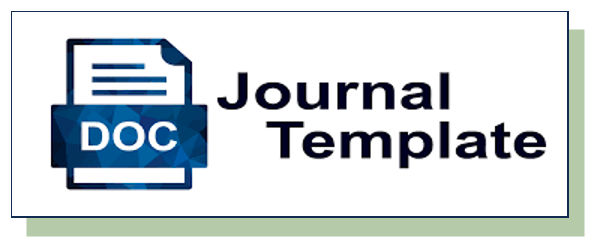Providing Online Feedback Using an AI Proof-reading Tool to Enhance Student Surface-Level Writing Skills
DOI:
https://doi.org/10.37304/ebony.v2i1.4040Keywords:
written corrective feedback, proofreading tools, surface-level errorsAbstract
This study explores the use of an AI proofreading tool in providing feedback on surface features of student writing. It examines the effect of ProofWriter online feedback compared to teacher feedback on students’ writing improvement, and investigates which aspect of students’ surface-level writing skills improves the most after using the proofreading tool for two-months. Participants were 20 fourth-semester secretarial students taking English Business Correspondence II course. The ‘online group’ students used ProofWriter online tool to get feedback on surface-level aspects of their writing, and the ‘non-online group’ students got feedback from the class teacher while practicing to write English business letters. A pre-test and post-test were administered to show the students’ performance in writing the business letters. The letters were graded using the ESL Composition Profile rubric, and then means of the pre-test and post-test were calculated and T test was applied. A questionnaire about using ProofWriter online tool was distributed to the online group students. The results showed the online group students significantly increased their surface-level writing skills in a slightly higher level than those of the non-online group. They also improved the most in grammar for the surface features of writing.
Downloads
References
Beason, L. (2001). Ethos and error: How business people react to errors. College Composition and Communication, 53 (1), pp. 53-64.
Bitchener, J. (2008). Evidence in support of written corrective feedback. Journal of Second Language Writing 17, pp. 102–118.
Bitchener, J., East, M. and Cartner, H. (2010). The effectiveness of providing second language (L2) writers with on-line written corrective feedback. Ako Aotearoa. Retrieved from https://ako.ac.nz/knowledge-centre/the-effectiveness-of-providing-second-language-l2-writers-with-on-line-written-corrective-feedback/
Bitchener, J. and Knoch, U. (2008). The value of written corrective feedback for migrant and international students. Language Teaching Research, 12 (3), 409-431.
Chomsky, N. (1965). Aspects of the Theory of Syntax, Cambridge: M.I.T. Press. Retrieved from http://www.chomsky.info/onchomsky/19720629.htm
Ellis, R. (2009). A typology of written corrective feedback types. ELT Journal, 63 (2), pp. 97–107.
Ellis, R., Sheen, Y., Murakami, M. and Takashima, H. (2008). The effects of focused and unfocused written corrective feedback in an English as a foreign language context. System 36, pp. 353–371.
Elola, I. and Oskoz, A. (2016). Supporting second language writing using multimodal feedback. Foreign Language Annals, 49 (1), pp. 58-74.
Evan, N. W., Hartshorn, J. K. and Strong-Krause, D. (2011). The efficacy of dynamic written corrective feedback for university-matriculated ESL learners. System 39 (2), 229-239.
Ferris, D. R. (2004) The “Grammar Correction” debate in L2 writing: Where are we, and where do we go from here? (and what do we do in the meantime…?). Journal of Second Language Writing 13, pp. 49-62, doi:10.1016/j.jslw.2004.04.005.
Ferris, D. R., and Hedgcock, J. S. (2005). Teaching ESL Composition: Purpose, process, and practice. Mahwah, NJ: Lawrence Erlbaum Associates.
Halim, T., Wahid, R. and Halim, S. (2021). EFL students’ attitudes toward corrective feedback: a study conducted at undergraduate level. Saudi Journal of Language Studies Vol. 1 No. 1, pp. 40-49, doi: 10.1108/SJLS-03-2021-0004.
Halimi, S.S. (2008). Indonesian teachers’ and students’ preferences for error correction. Wacana, Vol. 10 No. 1, pp. 50-71.
Harris, M. and Silva, T. (1993). Tutoring ESL students: issues and options. College Compositions and Communication 44 (4), pp. 525-537.
Hashemian, M. and Farhang-ju, M. (2018). Effects of metalinguistic feedback on grammatical accuracy of Iranian field (in)dependent L2 learners’ writing ability. Journal of Research in Applied Linguistics Vol. 9 No. 2, pp. 141–161.
Hattie, J. and Timperley, H. (2007). The Power of Feedback. Review of Educational Research Vol. 77 No. 1, pp. 81-112, doi: 10.3102/003465430298487.
Irwin, B. (2017). Written Corrective Feedback: Student Preferences and Teacher Feedback Practices. IAFOR Journal of Language Learning Vol. 3 No.2, pp. 35-58.
Jacobs, H. L., Zinkgraf, S. A., Wormuth, D. R., Hartfiel, V. F., and Hughey, J. B. (1981). Testing ESL Composition: A practical approach. Rowley, MA: Newbury House.
Kang, E., and Han, Z. (2015). The efficacy of written corrective feedback in improving L2 written accuracy: a meta-analysis. Modern Language Journal 99, pp. 1–18, doi: 10.1111/modl.12189.
Lee, I. (2008). Student reactions to teacher feedback in two Hong Kong secondary classrooms. Journal of Second Language Writing 17, 144–164, doi: 10.1016/j.jslw.2007.12.001.
Lim, S. C., and Renandya, W. A. (2020). Efficacy of written corrective feedback in writing instruction: a meta-analysis. The Electronic Journal for English as a Second Language 24, pp. 1–26.
Liu, Y. (2008). The effects of error feedback in second language writing. Journal of Second Language Acquisition and Teaching 15, p. 65-79.
McGraw, K. O. and Wong, S. P. (1996). Forming inferences about some intraclass correlation coefficients. Psychological Methods 1, pp. 30–46, doi:10.1037/1082-989X.1.1.30.
O’Flaherty, D. (2016). Japanese High School Students’ Attitudes Towards and Usage of Corrective Feedback on Their Written Work. The Language Teacher Vol. 40 No. 6, pp. 3-8.
Rafoth, B. (2004). Responding online. In Bruce, S. and Rafoth, B. (Eds.) ESL Writers: A Guide for Writing Center Tutors (pp. 1-17). Portsmouth, NH: Boynton.
Sheen, Y., Wright, D. and Moldawa, A. (2009). Differential effects of focused and unfocused written correction on the accurate use of grammatical forms by adult ESL learners. System 37, pp. 556–569.
Truscott, J. (1996). The case against grammar correction in L2 writing classes. Language Learning 46 (2), 327-369.
Van Beuningen, C., De Jong, N. H., and Kuiken, F. (2012). Evidence on the effectiveness of comprehensive error correction in second language writing. Language Learning 62 (1), 1-41.
Yang, M., Badger, R., and Yu, Z. (2006) A comparative study of peer and teacher feedback in a Chinese EFL writing class. Journal of Second Language Writing 15, pp. 179–200, doi: 10.1016/j.jslw.2006.09.004.
Zhang, T., Chen, X., Hu, J. and Ketwan, P. (2021). EFL students’ preferences for written corrective feedback: Do Error Types, Language Proficiency, and Foreign Language Enjoyment Matter? Front. Psychol. 12:660564, doi: 10.3389/fpsyg.2021.660564.
Downloads
Published
How to Cite
Issue
Section
License

This work is licensed under a Creative Commons Attribution-NonCommercial 4.0 International License.











